-
 Bitcoin
Bitcoin $116500
0.84% -
 Ethereum
Ethereum $3829
4.17% -
 XRP
XRP $3.048
1.61% -
 Tether USDt
Tether USDt $1.000
0.02% -
 BNB
BNB $775.2
0.54% -
 Solana
Solana $169.3
0.44% -
 USDC
USDC $0.0000
0.02% -
 TRON
TRON $0.3412
1.98% -
 Dogecoin
Dogecoin $0.2130
3.62% -
 Cardano
Cardano $0.7539
1.53% -
 Hyperliquid
Hyperliquid $39.16
0.66% -
 Sui
Sui $3.673
5.28% -
 Stellar
Stellar $0.4074
1.72% -
 Chainlink
Chainlink $17.95
7.06% -
 Bitcoin Cash
Bitcoin Cash $576.8
1.16% -
 Hedera
Hedera $0.2506
0.97% -
 Ethena USDe
Ethena USDe $1.001
0.00% -
 Avalanche
Avalanche $22.52
1.46% -
 Litecoin
Litecoin $121.4
2.31% -
 UNUS SED LEO
UNUS SED LEO $8.957
-0.39% -
 Toncoin
Toncoin $3.305
3.22% -
 Shiba Inu
Shiba Inu $0.00001252
1.30% -
 Uniswap
Uniswap $10.06
3.69% -
 Polkadot
Polkadot $3.736
1.76% -
 Dai
Dai $1.000
-0.01% -
 Bitget Token
Bitget Token $4.418
1.82% -
 Monero
Monero $261.2
-7.81% -
 Cronos
Cronos $0.1477
2.56% -
 Pepe
Pepe $0.00001076
2.29% -
 Aave
Aave $273.3
4.22%
What types of investors are suitable for SOL leveraged trading?
Only experienced crypto traders with high risk tolerance, substantial capital, and a deep understanding of Solana and leveraged trading should consider SOL leveraged trading; beginners should avoid it.
Mar 16, 2025 at 06:45 pm
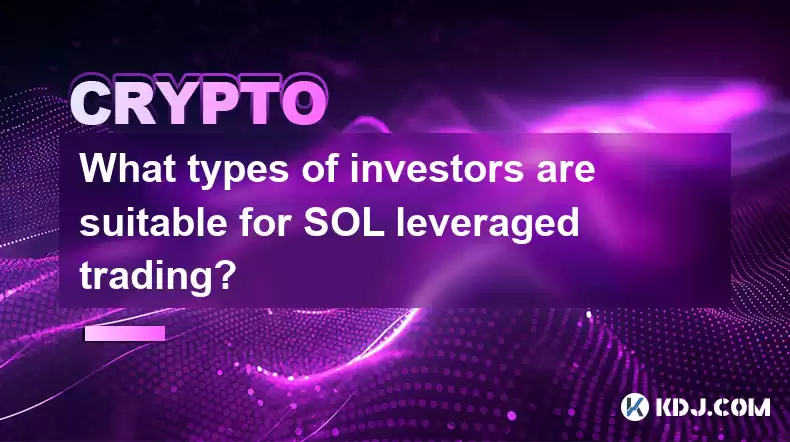
Key Points:
- Risk Tolerance: Leveraged trading significantly amplifies both profits and losses. Only investors with a high risk tolerance and a deep understanding of market volatility should consider it.
- Trading Experience: Successful leveraged trading requires significant experience in cryptocurrency markets, technical analysis, and risk management. Beginners should avoid it.
- Financial Resources: Leveraged trading requires substantial capital to withstand potential losses. Investors should only use funds they can afford to lose entirely.
- Market Understanding: A thorough understanding of the Solana ecosystem, its strengths, weaknesses, and potential market movements is crucial for informed decision-making.
- Technical Skills: Proficiency with trading platforms, charting tools, and order types is necessary for effective execution and risk mitigation.
What types of investors are suitable for SOL leveraged trading?
Leveraged trading in Solana (SOL), like any leveraged trading, is inherently risky. It magnifies potential gains but also exponentially increases potential losses. Therefore, suitability depends heavily on the investor's profile. It's not a strategy for everyone.
High-Risk Tolerance Investors:
The most crucial factor is risk tolerance. Leveraged trading can lead to substantial losses in a short period. Only investors comfortable with the possibility of losing their entire investment should consider it. This isn't about a small percentage loss; it's about complete capital wipeout.
Experienced Cryptocurrency Traders:
Leveraged trading isn't for beginners. A solid understanding of cryptocurrency markets, technical analysis (chart patterns, indicators), and fundamental analysis (Solana's ecosystem, updates, competition) is paramount. Years of experience in successful trading are beneficial, not just in crypto, but ideally across multiple asset classes.
Sophisticated Risk Management:
Effective risk management is critical. Investors should have a well-defined trading plan with clear entry and exit strategies, stop-loss orders to limit potential losses, and position sizing to avoid overexposure. They should understand margin calls and liquidation risks thoroughly.
Understanding Solana's Ecosystem:
Successful leveraged trading requires a deep understanding of Solana's blockchain technology, its strengths (speed, scalability), weaknesses (centralization concerns), and its overall position within the cryptocurrency market. Following news, developments, and community sentiment is vital for informed decision-making.
Financial Resources and Discipline:
Leveraged trading necessitates significant capital. Investors should only utilize funds they can afford to lose entirely. Emotional discipline is equally vital; panic selling during market downturns can exacerbate losses. A cool head under pressure is essential.
Technical Proficiency:
Proficiency in using trading platforms, charting software, and various order types (limit orders, stop-loss orders, take-profit orders) is crucial for efficient execution and risk mitigation. Understanding leverage ratios and margin requirements is fundamental.
Active Monitoring and Adjustment:
Leveraged positions require constant monitoring. Market conditions can change rapidly, necessitating adjustments to positions based on real-time data and analysis. Passive investment strategies are unsuitable for leveraged trading.
Access to Advanced Trading Tools:
Some sophisticated traders use advanced tools like algorithmic trading or bots to automate their strategies and manage risks more effectively. However, these tools require even more technical expertise and understanding. Misuse can amplify losses.
Diversification Strategy:
Even within leveraged trading, diversification can be beneficial. Instead of concentrating all leveraged positions on SOL, investors might consider diversifying across other cryptocurrencies or asset classes. This reduces overall portfolio risk.
Professional Advice:
While not mandatory, seeking advice from experienced financial advisors specializing in cryptocurrency and leveraged trading can be highly beneficial, especially for less experienced investors. This can aid in creating a robust risk management strategy and understanding market dynamics.
Common Questions:
Q: What is leverage in cryptocurrency trading?
A: Leverage allows traders to borrow funds from an exchange to amplify their trading positions. A 10x leverage means a $1,000 investment controls $10,000 worth of SOL. Gains are multiplied, but losses are also magnified.
Q: What are the risks of leveraged SOL trading?
A: The primary risk is liquidation. If the market moves against your position, the exchange may liquidate your assets to cover losses, resulting in the loss of your entire investment. Volatility in the crypto market makes this particularly dangerous.
Q: How can I mitigate the risks of leveraged SOL trading?
A: Use stop-loss orders to automatically close your position when the price reaches a predetermined level. Employ proper position sizing (avoiding overexposure). Diversify your portfolio. Thoroughly research and understand the risks before engaging.
Q: Are there any regulations surrounding leveraged SOL trading?
A: Regulations vary by jurisdiction. Many exchanges have their own terms and conditions regarding leveraged trading. It's crucial to understand the rules and comply with them. The lack of robust global regulation is an additional risk factor.
Q: What are some alternative strategies to leveraged SOL trading?
A: Consider investing in SOL directly (without leverage), engaging in staking, or participating in DeFi protocols within the Solana ecosystem. These offer lower risk, but also potentially lower returns.
Disclaimer:info@kdj.com
The information provided is not trading advice. kdj.com does not assume any responsibility for any investments made based on the information provided in this article. Cryptocurrencies are highly volatile and it is highly recommended that you invest with caution after thorough research!
If you believe that the content used on this website infringes your copyright, please contact us immediately (info@kdj.com) and we will delete it promptly.
- Crypto Phishing Alert: $3 Million USDT Loss Highlights DeFi Risks
- 2025-08-08 01:10:12
- Crypto Presale Mania: Is Punisher Coin the High ROI King?
- 2025-08-08 01:10:12
- Online Betting, Platforms & Crypto Access: What's Hot in 2025
- 2025-08-08 00:50:12
- Bitcoin Mining, Natural Gas & Union Jack Oil: A New Dawn for Onshore UK Energy?
- 2025-08-08 00:55:12
- Bitcoin's Wild Ride: Bollinger Bands, $117K, and What's Next?
- 2025-08-08 00:30:12
- Ripple, Rail, and Stablecoin Payments: A $200M Power Play
- 2025-08-07 22:50:12
Related knowledge

Where can I buy UMA (UMA)?
Aug 07,2025 at 06:42pm
Understanding UMA and Its Role in Decentralized FinanceUMA (Universal Market Access) is an Ethereum-based decentralized finance (DeFi) protocol design...

What exchanges support buying IOTA (MIOTA)?
Aug 07,2025 at 09:58pm
Understanding the Role of Private Keys in Cryptocurrency SecurityIn the world of cryptocurrency, private keys are the cornerstone of ownership and con...
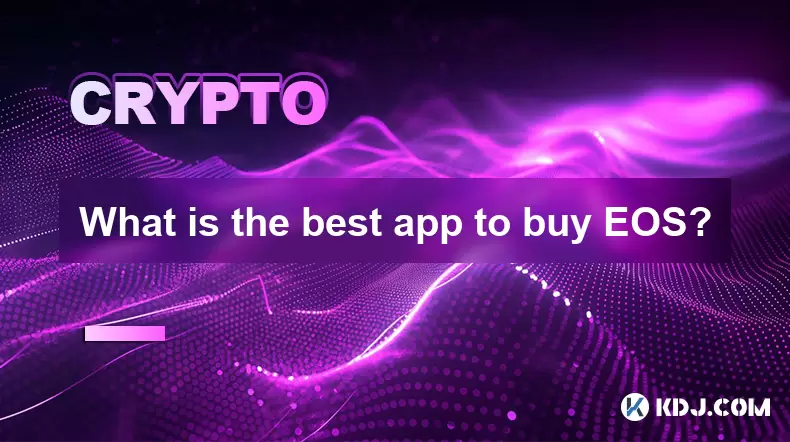
What is the best app to buy EOS?
Aug 07,2025 at 04:35pm
Understanding EOS and Its Role in the Cryptocurrency EcosystemEOS is a blockchain platform designed to support decentralized applications (dApps) with...
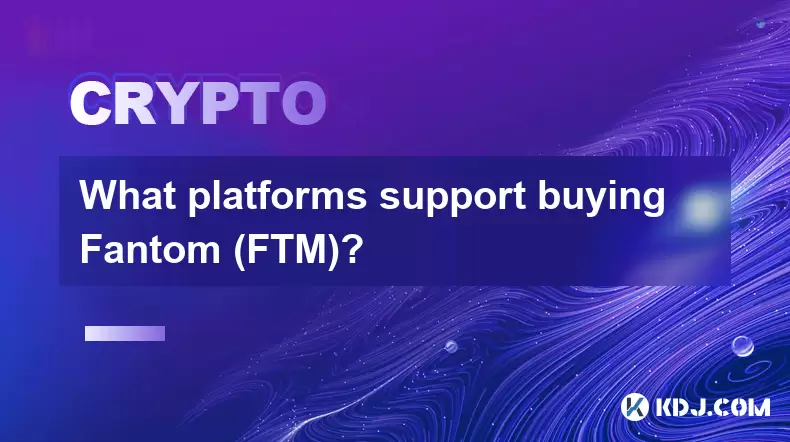
What platforms support buying Fantom (FTM)?
Aug 08,2025 at 01:56am
Overview of Fantom (FTM) and Its EcosystemFantom (FTM) is a high-performance, scalable, and secure layer-1 blockchain designed to overcome the limitat...
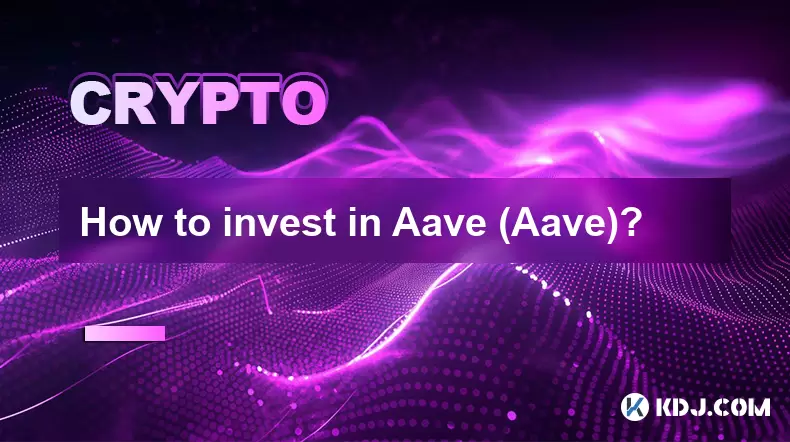
How to invest in Aave (Aave)?
Aug 08,2025 at 01:07am
Understanding Aave (AAVE) and Its Role in DeFiAave is a decentralized finance (DeFi) protocol that enables users to lend, borrow, and earn interest on...
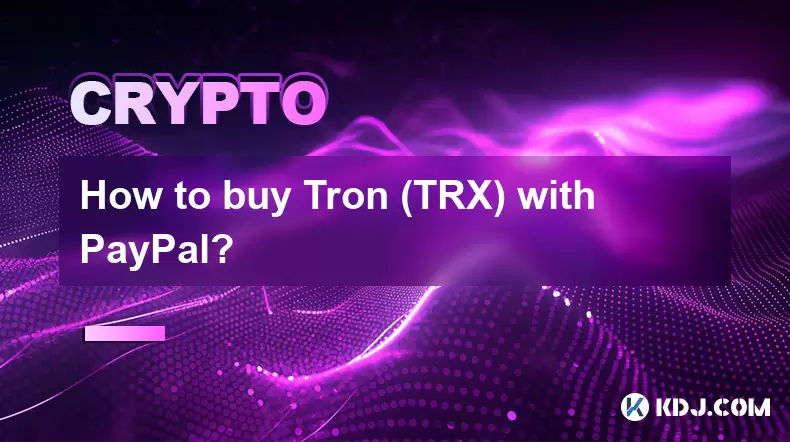
How to buy Tron (TRX) with PayPal?
Aug 08,2025 at 12:57am
Understanding Tron (TRX) and PayPal CompatibilityTron (TRX) is a decentralized blockchain platform focused on building a global digital content entert...

Where can I buy UMA (UMA)?
Aug 07,2025 at 06:42pm
Understanding UMA and Its Role in Decentralized FinanceUMA (Universal Market Access) is an Ethereum-based decentralized finance (DeFi) protocol design...

What exchanges support buying IOTA (MIOTA)?
Aug 07,2025 at 09:58pm
Understanding the Role of Private Keys in Cryptocurrency SecurityIn the world of cryptocurrency, private keys are the cornerstone of ownership and con...

What is the best app to buy EOS?
Aug 07,2025 at 04:35pm
Understanding EOS and Its Role in the Cryptocurrency EcosystemEOS is a blockchain platform designed to support decentralized applications (dApps) with...

What platforms support buying Fantom (FTM)?
Aug 08,2025 at 01:56am
Overview of Fantom (FTM) and Its EcosystemFantom (FTM) is a high-performance, scalable, and secure layer-1 blockchain designed to overcome the limitat...

How to invest in Aave (Aave)?
Aug 08,2025 at 01:07am
Understanding Aave (AAVE) and Its Role in DeFiAave is a decentralized finance (DeFi) protocol that enables users to lend, borrow, and earn interest on...

How to buy Tron (TRX) with PayPal?
Aug 08,2025 at 12:57am
Understanding Tron (TRX) and PayPal CompatibilityTron (TRX) is a decentralized blockchain platform focused on building a global digital content entert...
See all articles

























































































